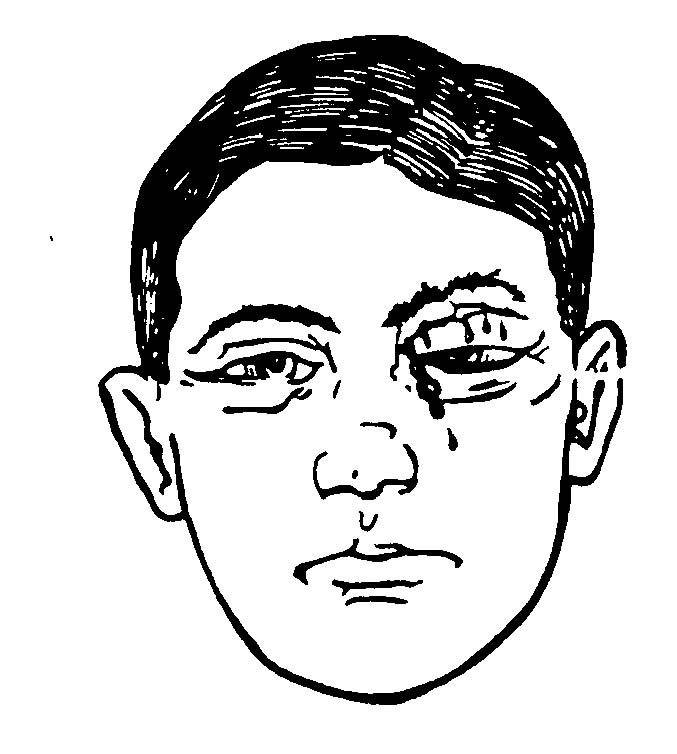Eye, Ear, and Nose Injuries
Lesson 4: Treat Lacerations, Contusions, and Extrusions of the Eye
4-4
4-4. TREAT INJURY TO TISSUE SURROUNDING EYES
Injury may be on the eyebrow, eyelid, bridge of nose, or temple area. Vision is usually not impaired (see figure 4-1).
Figure 4-1. Injury to tissue surrounding eye.
a. Close the patient's injured eye's eyelid prior to dressing.
b. Cover the injured eye with an eye pad or other sterile dressing.
(1) Avoid putting pressure on wound because eyeball may be injured.
(2) Pressure may cause more damage.
c. Cover torn eyelids with loose dressing.
(1) Handle torn eyelids very carefully to prevent further injury.
(2) Wrap detached fragment of eyelid skin separately in moist bandage. Send fragment along with the patient to the hospital (surgeon may use it to repair eyelid).
d. Place a first aid field dressing over the eye pad on the injured eye.
(1) Wrap tails around head.
(a) Cross one tail over top of head.
(b) Take second tail under ear on injured side.
(2) Cross tails under ear on injured side, take under chin, over head and tie on opposite side from where they were crossed.
(3) Dressing should not cover nose, mouth, or ears.
(4) Since this is injury to tissue around eye, and not the eyeball, bandage only injured eye.
(5) Ensure tail under chin does not slip down on neck interfering with breathing.


